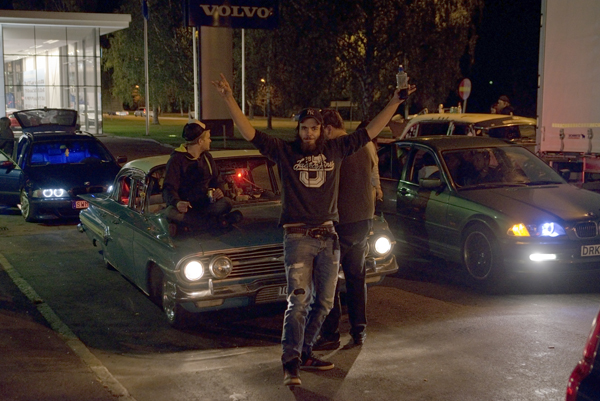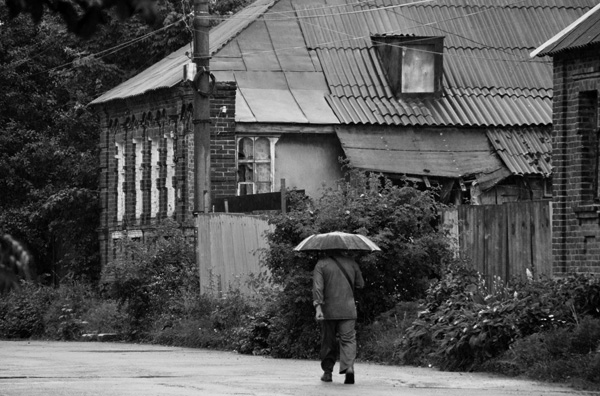Street photography
When you ask for a definition of street photography, you will find a lot of opinions and controversy about those definitions. It is a very wide and diverse field where the lines are blurry and a strict definition is impossible. To some, street photography has to be about people, if there is no person in the picture, it is not street photography. One could argue, that this is the difference between street photography and urban landscape. And there is of course a similar discussion about the locations. Does it have to be a street? How about airports or train stations? And where is the difference between street photography, documentary and journalism?

I want to go with a wide definition: Street photography is a documentation of contemporary life and society, photographed in public spaces. And from the perspective of a photographer it is a very personal experience and a very personal view on our world. There is hardly any other field within photography, that gets you so close to your subject, gets you into the midst of it, with the exception of journalism. Then again, street photography is a form of journalism, just without a media agency in the background. In street photography you have to get right into the action. To quote Robert Capa: If your photos aren’t good enough, you are not close enough! Almost all kinds of techniques can be used for this type of photography, it borrows from landscape, architecture and portraiture, it uses night and long exposure techniques and a variety of different cameras. Street photography is never staged. Honesty and authenticity are a key feature of street photography, the codex of ethics very close to documentary photography and journalism.

And finally, street photography is a very democratic art form, anybody can do it, any type of camera can be used and any public place can be the scenery. The field is plain and leveled for everybody, the difference lies in the ability to see the story as it unfolds in front of your eyes and your reaction to it.
In contrast to other disciplines within photography, there is a different approach to quality in street photography as well. Imperfections in framing, grainy images and sometimes even slight imperfections in focussing are much more acceptable here. The important thing is telling the story, capturing the moment and being authentic.
Street photography has been around for many decades. Since the invention of photography itself, people have taken pictures of the life and the scenery around them. The art of capturing an authentic glimpse on every day life while at the same time creating a unique image is becoming increasingly popular. If done right, street photography shows us the contemporary world through small windows, close up and personal. And when we look at the images of the masters of street photography like Henri Cartier Bresson or Vivian Maier, we can see, that they captured our history in the same personal way. And we understand, that it is the people in those pictures, that fascinate us the most, sometimes a crowd of random people but very often individual people, that look into the camera.
The most difficult part of street photography is to notice the story in the scenery around us and find the right way to tell that story in a photograph – all that within a very short time, before ‘the decisive moment’ has passed. That is the reason why street photography is one of the most uncertain types of photography, in which almost nothing is in our control and almost everything is based on luck, persistence and the ability to see and capture the moment.

And that is, where things get difficult. We want a portrait of a person, not posed, not artificial but still close up and authentic. We want to have a glimpse into someones life, unaffected and natural while we ourself want to be unnoticed. The presence of a photographer changes peoples reactions and behavior, it might change a work process, a game or ceremony. We don’t want that to happen, we want authenticity.
The most memorable pictures are, to my mind, the ones that show strong emotions and reflect in some way the human condition. Pain, fear, happiness, grief and beauty are touching us, when we see them in other people or on photographs.
We are surrounded by people and their emotions almost all the time in various degrees of visibility. The challenging part is to capture them in an image. First of all, you have to find the emotion in the streets through peoples’ body language or facial expressions. Then you have to be quick enough to take the photograph before people notice you.
Some people will react with suspicion, they might not want to be photographed and especially not by a complete stranger. The sphere of privacy that we all have, is important to us and we don’t like uninvited people there. As a photographer we are just as aware of that fact and we might react with reluctance before we breech someone else’s private sphere.
However, if you do it right, you will create a compelling and capturing image that reflects emotions and that a viewer can connect with on a deeper level.
Although you might start out in a casual way, trying to grasp the basic concepts and techniques of street photography, it is a good idea to think about the bigger picture.
What it is that you actually want to capture and create. What do you want your photographs to be of, and what do you want them to look like?
You might find inspiration in the work of other photographers or you know already, what appeals to you. It is a good idea to have a concept, a theme in your work, to specialize in a certain aspect of street photography. The more you go out and shoot, the more you will find out, what type of pictures you like to take, which motives are your favorites. You will start to develop your own style and improve the quality of your images over time.
When you go out to do street photography, don’t expect every photo to be a masterpiece. Street photography is very difficult, so be patient and try to enjoy the whole process of walking the streets, observing every day life, getting shots and don’t just look at the final results.
As with so many other things, photography needs practice and experience. Nobody would argue that athletes or musicians need training, practice and rehearsals. It is the same with photography, you need to practice with you camera, to master its features and you need practice in observation.
Take your camera with you often, if not always, look around you with the eyes of a photographer, practice and sharpen your vision. With time, you get a feeling for the streets, you learn to anticipate and you will know, when you should have your camera ready.